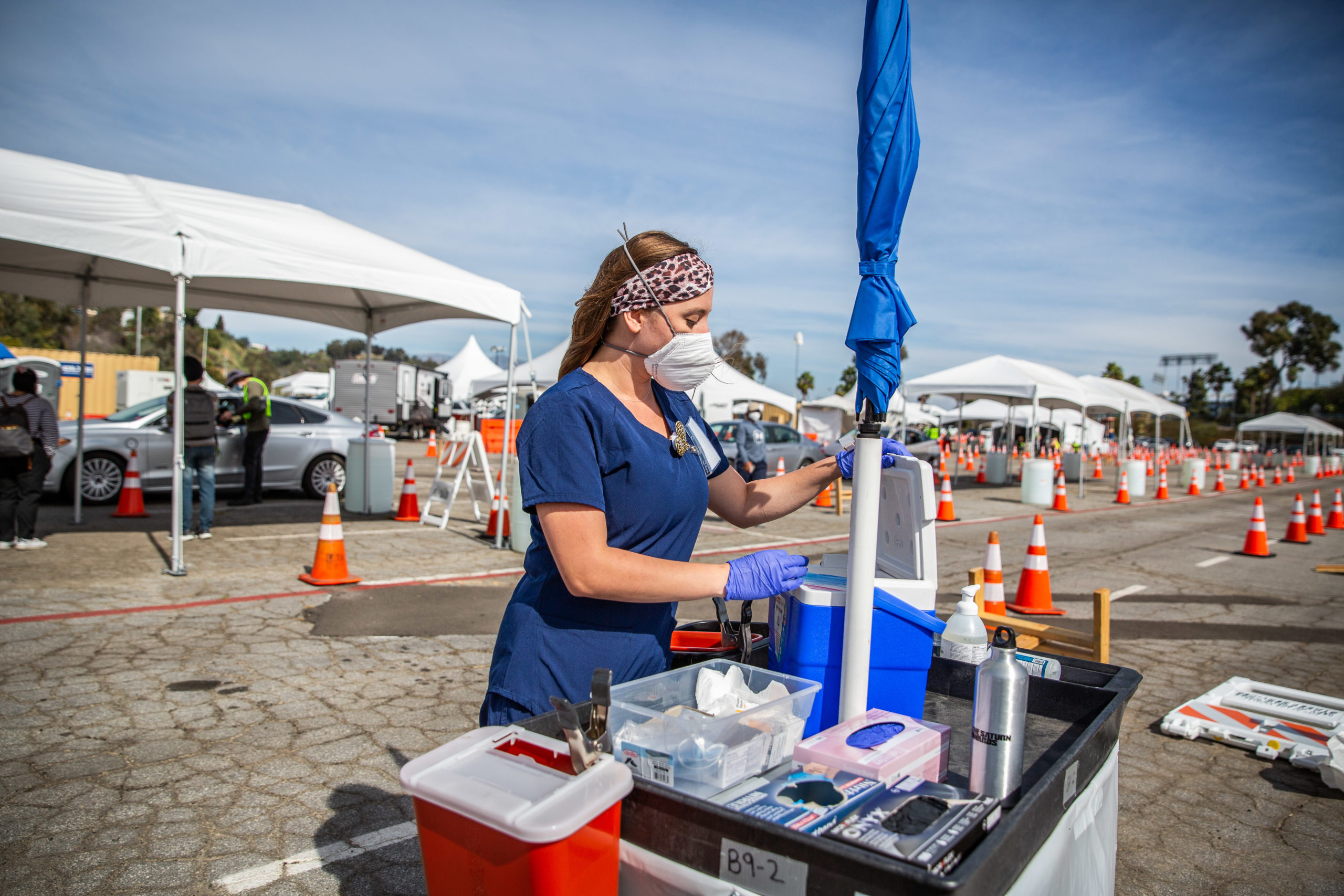How CDP funded COVID-19 in 2021: Vaccine access

Editor’s note: The following post was originally shared in Philanthropy and COVID-19: Examining two years of giving, a report published on May 25, 2022 by the Center for Disaster Philanthropy and Candid.
Within the U.S., “There are many reasons eligible people are not vaccinated or boosted,” according to The New York Times. “Surveys have indicated that some people are adamant in their refusal of the coronavirus vaccines, while others are open to getting a shot but have been putting it off or want to wait and see before making a decision for themselves or for their children. The first group, surveys have shown, tends to be disproportionately white, rural, evangelical Christian and Republican. The second group tends to be a more diverse and urban group, including many younger people, Black and Latino residents, and Democrats.”
Internationally, the reasons vary depending upon the country but include inability to store vaccines; a shortage of vaccines, equipment or medical personnel; fear of the medical system/Western medicine; mistrust of government; as well as all the concerns in the U.S. listed above.
As of April 14, 2022, 21% of people worldwide who have received at least one vaccination are from North America or Europe, and 25% are from high-income countries. The wealthiest 30 countries have just 10.9% of the world’s population but have access to 14.4% of the vaccines. In the U.S., this works out to 5% of the vaccines for only 4.3% of the global population. To look at the flip side, the least wealthy 30 countries have 1.4% of the vaccines but are home to 8.5% of the population.
Throughout the pandemic, research has shown that the virus can mutate easiest in people who have not been vaccinated. Increasing the global vaccination rate, therefore, is key to containing the virus and moving it from a pandemic to endemic, similar to the flu.
CDP recognized the barriers to vaccine access and the acute needs that exist in ensuring everyone gets inoculated. In 2021, CDP granted $4,351,039 for vaccine access, the top-funded area in its overall grantmaking.
Two of CDP’s many health grants also targeted vaccine access.
- $500,000 to Direct Relief for COVID-19 response in the Bahamas, Dominica, Dominican Republic, Jamaica, and Puerto Rico to procure pharmaceutical refrigerators and freezers and other equipment to expand vaccine storage capacity.
- $250,000 to Plan International to ensure safe and sanitary public spaces and access to vaccine information for hard-to-reach populations (including refugees, internally displaced people, Indigenous peoples, children, and youth, especially girls) in the far north and southwest regions of Cameroon.
Other vaccine access grants included:
- $450,000 to Internews Network for COVID-19 response in Bolivia, Colombia, and Peru to strengthen Indigenous, Afro- descendant, and last-mile health networks, and build trust around COVID-19 vaccines.
- $1 million to Community Organized Relief Effort (better known as CORE) to expand COVID-19 vaccine access to neighborhoods comprised of Black, Indigenous, and other people of color by increasing technical and operational support to underserved and high-risk communities.
- $300,000 grant to National Association of Free and Charitable Clinics to expand COVID-19 vaccination access in the United States by investing in the necessary infrastructure and materials for current and future vaccination sites. They also increased access for underserved populations by supporting translation services, health literacy development, transportation, training, and education.
As the range of grants demonstrates, vaccine access goes beyond providing actual vaccines or medical personnel (although, certainly, that remains critical, especially in lower-income nations). It entails mobile outreach for rural and hard-to-reach communities. It supports the development and translation of materials into multiple formats and languages. It assists in identifying and training community leaders who can educate their community members and build trust in the medical system.
CDP encourages funders to support vaccine access domestically and internationally, by:
- Looking to CDP’s work and other examples to understand what kinds of activities are having success in increasing vaccination rates.
- Identifying at-risk populations to support in your community and/or internationally.
- Joining with other funders to create collaborative opportunities for bigger impact.
